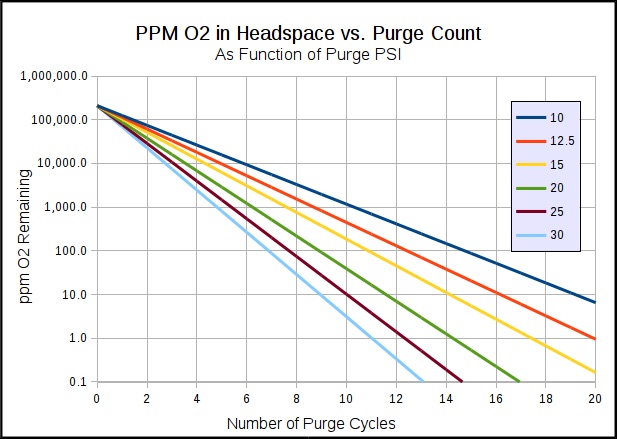StopTakingMyUsername
Well-Known Member
- Joined
- Sep 12, 2015
- Messages
- 114
- Reaction score
- 6
We made a juice bomb IPA. It was incredibly aromatic, flavorful, ridiculous amount of hop.
It's been little over a week, and we tapped the keg for a party...
No aromatics at all.
Drinks like a pale. Not much flavor.
I don't understand what happened. This is an ongoing theme with us, as well. Every time we make hoppy beers, they are great at first, and within a week, they're duds.
How can I keep the hops in the beers??
Process: very little (or no) bittering charge @ 60. Major additions at 20 or 10, whirlpool, and dry hop. We use roughly 5-6 oz in whirlpool (180 F down to about 120 F) and roughly 6-8 oz in dry hop.
We add dry hop usually on the 3rd or 4th day of fermentation. Sometimes we split the amount in half, adding half on the 3rd or 4th day, and half once fermentation is completed and the beer is transferred.
We've tried this in buckets -> keg. Also had this issue fermenting in kegs and doing closed CO2 transfer from keg to keg.
I don't know why it's happening, but these are my guesses:
- O2 pickup (but this has to be minimal, since we are doing CO2 closed transfers in stainless - purged before each transfer)
- Not enough hops (I dunno, we are using a lot)
- Oxygenating the wort (usually use an air stone and can of pure O2, I give it about 30-45 sec in the wort, post chill, pre-pitch).
- ????????????????
Please help?
this is a huge, reoccurring stumbling block, and very frustrating for us.
We LOVE our hoppy beers... and it's maddening to make one that is so incredibly juicy, aromatic, and flavorful..
then we get excited, tell our friends, and by the time they try it a week later, it's a boring, hop-less, flavor-less dud.
It's been little over a week, and we tapped the keg for a party...
No aromatics at all.
Drinks like a pale. Not much flavor.
I don't understand what happened. This is an ongoing theme with us, as well. Every time we make hoppy beers, they are great at first, and within a week, they're duds.
How can I keep the hops in the beers??
Process: very little (or no) bittering charge @ 60. Major additions at 20 or 10, whirlpool, and dry hop. We use roughly 5-6 oz in whirlpool (180 F down to about 120 F) and roughly 6-8 oz in dry hop.
We add dry hop usually on the 3rd or 4th day of fermentation. Sometimes we split the amount in half, adding half on the 3rd or 4th day, and half once fermentation is completed and the beer is transferred.
We've tried this in buckets -> keg. Also had this issue fermenting in kegs and doing closed CO2 transfer from keg to keg.
I don't know why it's happening, but these are my guesses:
- O2 pickup (but this has to be minimal, since we are doing CO2 closed transfers in stainless - purged before each transfer)
- Not enough hops (I dunno, we are using a lot)
- Oxygenating the wort (usually use an air stone and can of pure O2, I give it about 30-45 sec in the wort, post chill, pre-pitch).
- ????????????????
Please help?
this is a huge, reoccurring stumbling block, and very frustrating for us.
We LOVE our hoppy beers... and it's maddening to make one that is so incredibly juicy, aromatic, and flavorful..
then we get excited, tell our friends, and by the time they try it a week later, it's a boring, hop-less, flavor-less dud.















![Craft A Brew - Safale BE-256 Yeast - Fermentis - Belgian Ale Dry Yeast - For Belgian & Strong Ales - Ingredients for Home Brewing - Beer Making Supplies - [3 Pack]](https://m.media-amazon.com/images/I/51bcKEwQmWL._SL500_.jpg)










































